Issues with calculating the expansion rate of the universe have led to differences in the results, depending on the method used. A pair of physicists have proposed a new type of dark energy to resolve the conflict. Plus, volcanic ash and volcanoes, the composition of the Sun, more exoplanets, and Mars’ moons.
Media
Transcript
Hello and welcome to the Daily Space. I am your host Dr. Pamela Gay.
And I am your host Beth Johnson.
And we are here to put science in your brain.
In our first story of the day, that science might also hurt your brain a little.
Back in 1998, it was discovered that our universe is not just expanding, but that expansion is accelerating over time. Exactly what is happening is unknown, but astronomers don’t need to understand a thing before they name it. The mysterious thing accelerating the expansion of the universe got called dark energy, and it makes up roughly 70% of the universe’s mass-energy ingredient list.

Discovering the universe is accelerating apart was weird, but as we’ve worked to understand that expansion, things have gotten somehow weirder. It was discovered that when researchers measure the universe’s expansion parameters using data from the beginning of the universe — using data from the Cosmic Microwave Background — you get one value, but when you measure them from the more modern universe you get a different value. The difference is small enough that everyone blamed observational error for a while, but it’s hit the point where the observers can say with beautiful detail, their results are right, there is a discrepancy, and there is either something wrong with our understanding of the universe, or there is no physics we’re missing.
I’m not sure if a new paper in Physical Review D counts as new physics or a better understanding of old physics, but however you label it, the paper, by Florian Niedermann and Martin Sloth, explains these differences as a result of dark energy undergoing some sort of a phase change as the universe expanded. It’s a quantum process with no direct analogy, but this kind of phase change can maybe be likened to carbon dioxide freezing out to ice or atoms changing their excitation state. This phase change can neatly explain the changes measured. This paper is new, and I can’t tell you if better cosmologists than me will find holes in their theories. It has so far made it past peer review, and this is a start. Maybe, just maybe, a path out of our current confusion has been found.
As much as we may point out the flaws in theories, sometimes they get things right. Back in 2004, Martin Laming theorized that magnetic fields can move the elements in the Sun’s outer layers around, causing the outermost layers to differ in composition from those below. He’s been plugging away on this work for many years, and finally, in 2020, observers published the data he needed to say, “Yes, my theory works.”
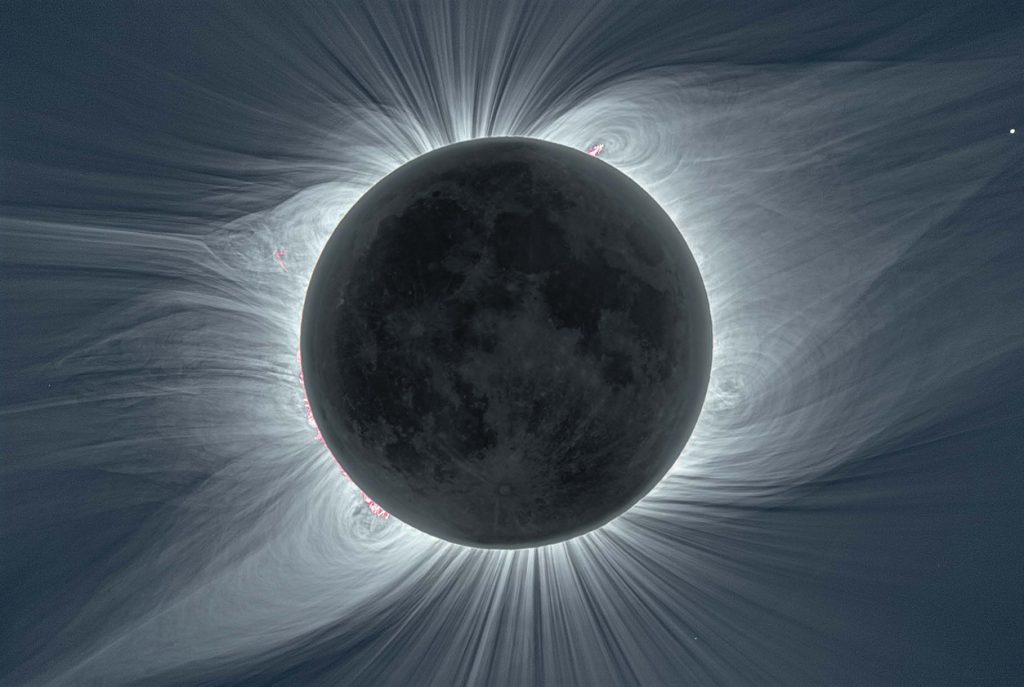
Using observations by Satoru Katsuda and company and also 2015 data from B.R. Dennis and company, Laming has shown in a new paper accepted to The Astrophysical Journal that, I quote: The very same waves, when they hit the lower solar regions, cause the change in chemical composition, which we see in the corona as this material moves upwards. In this way, the coronal chemical composition offers a new way to understand waves in the solar atmosphere and new insights into the origins of solar activity.
So yes, theorists do get things right. Sometimes.
Let’s face it: trying to say what will be seen someday is a lot harder than explaining what is being observed. In a new paper in Science Advances, researchers David Brooks and Stephanie Yardley study a family of high-energy particles from the Sun and find that as a group, they match the plasma located low in the Sun’s corona.

According to Yardley: In our study, we have observed for the first time exactly where solar energetic particles come from on the Sun. Our evidence supports theories that these highly charged particles originate from plasma that has been held down low in the Sun’s atmosphere by strong magnetic fields. These energetic particles, once released, are then accelerated by eruptions that travel at a speed of a few thousand kilometers a second.
When these particles reach the vicinity of Earth, they have the potential to do nasty things to spacecraft and electronics and even cause a bit of a health hazard to astronauts and people in airplanes! Yardley goes on to explain: Energetic particles can arrive at Earth very quickly, within several minutes to a few hours, with these events lasting for days. Currently, we can only provide forecasts of these events as they are taking place, as it is highly challenging to predict these events before they occur. By understanding the Sun’s processes better we can improve forecasts so that, when a major solar storm hits, we have time to act to reduce risks.
Here is to hoping that no big storm is coming soon, but if it does, it’s nice to know what part of the Sun we should be watching.
Speaking of the Sun, one of the ways we try and understand our solar system’s future is by looking for similar stars that are a bit older. This is like trying to understand how a person may age by looking at their grandparents; things may not be identical, but they will likely be pretty similar. In a new paper in Astronomy and Astrophysics, researchers led by Andrzej Niedzielski examined 122 stars and found planets in 26 systems. Three of these were red giant stars with the same mass as our sun but are older and have expanded out into red giant stars.
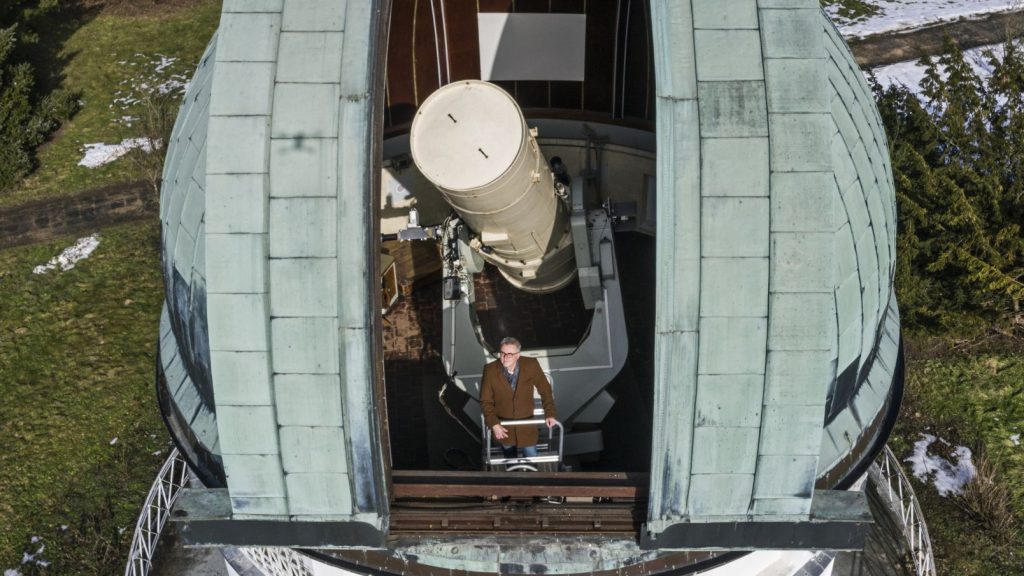
This discovery of planets around bloated stars answers the question: will the Sun consume all the planets? We knew from theories that it wouldn’t, but now we see that in fact as well, it really won’t. In one of these systems, with the license plate TYC 0434-04538-1, a planet was even found in a position akin to being between the orbits of Venus and Earth in our solar system. Given the size of the star, Mercury would have been goners, but hey, it’s nice to know we have a chance of living.
The discovered planets weren’t earthlike in any way. Observed worlds were massive gas giants, all larger (or much much larger) than Jupiter. This isn’t to say smaller worlds aren’t out there; they just are beyond the abilities of what this team could see. Here is to hoping that as our observing skills get better, we’ll be able to observationally prove that yes, Earth can potentially survive the expansion of the Sun, even if it does get a bit crispy around the edges.
This next story contains a fair amount of “and the theorists were, again wrong” celebration of observational science. I realized we do this a lot around here, and this is partially due to my personal bias as an observational astronomer who spent hundreds of nights freezing at mountaintop observatories and partially due to one bad experience with a theorist when I was a grad student.
Back in the summer of 2000, I attended my first special topics science meeting and I was all by myself trying to present what I thought was cool research. At one point, a very tall and physically imposing theorist came a little too close and started interrogating me on my work. He eventually stalked off, making it clear he felt I had done something wrong because my observations of the actual sky didn’t match his theories. That one particular encounter more than twenty years ago has perhaps caused me to find a bit too much joy in every observation that shows, yet again, the theorists weren’t as creative as the actual universe.
And boy, were the theorists wrong here.
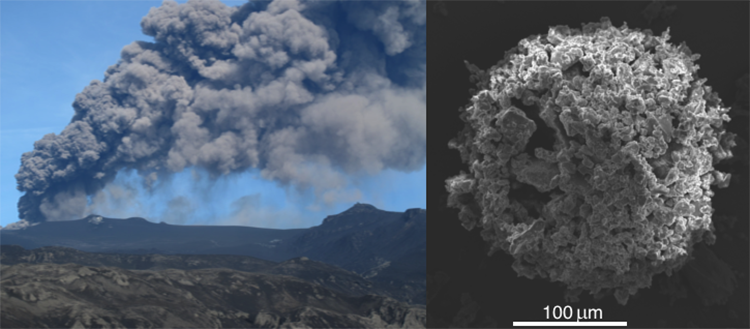
Some of you may remember that back in 2010, an Icelandic volcano beyond my ability to either pronounce or spell [Ed. note: Eyjafjallajökull], erupted with a mighty and ongoing plume of ash that disrupted air travel between North America and Europe and made chaos of European travel. While horrifying for commerce, that particular eruption also demonstrated how little we knew about how ash would move through the atmosphere. Since then, volcanologists have been using other eruptions to try and fix this knowledge gap before another big volcano goes off.
The way they did some of this research was super simple. In one instance, volcanologists studying Japan’s Sakurajima volcano put out adhesive strips to capture falling ash so they could see how it was structured — something that can’t be done once ash falls to the ground and gets mixed in with other materials. It was discovered that ash particles will clump up, and in general, these clumped particles will fall closer to the volcano.
In general, however, isn’t the same thing as always. Back in the 1993, it was theorized that if particles clumped together just right, they could form ash rafts capable of floating in the air for great distances. This theory was promptly squashed by other scientists and declared impossible. Well, it turns out, the theory was absolutely correct, as demonstrated by ash clumps that rafted themselves from Iceland to the United Kingdom back in 2010.
In the mix, teams also realized, and here I quote Eduardo Rossi: During a volcanic explosive eruption, fragments ranging from a few microns to more than two meters are ejected from the volcanic vent.
These particles are essentially knife-sharp bits of glass and rock capable of scouring airplane engines and windshields until the engines fail and the glass can no longer be seen through. Rossi goes on to explain: This is why the new strategies have integrated concentration thresholds better defining the dangerousness for aircraft engines. From two milligrams per cubic meter, airlines must have an approved safety case to operate.
It’s probably a good thing this work, which appears in the journal Nature Communications, is being published now.
The island nation of Iceland is one of the few nations of the world that is constantly expanding without any wars being required. Located at the split between the Eurasian and North American tectonic plates and straddling the Mid-Atlantic Ridge, this nation is growing as its land is split and volcanoes fill in the gaps.
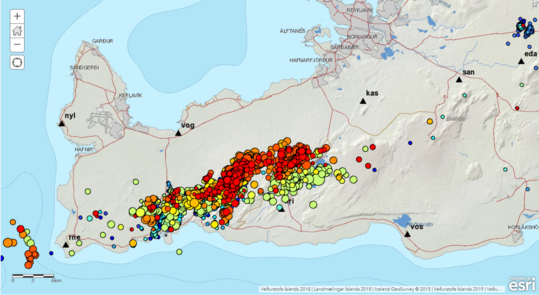
It’s almost impossible to predict when a volcano will erupt, but things are getting tense enough in Iceland right now that the Icelandic Met Office has increased the ash advisory to orange and has put out multiple warnings. The Reykjanes peninsula — where Reykavik, several other cities, and two-thirds of the nation’s population are located — has had nearing 20,000 earthquakes in the past week. While most are below third magnitude, there are still enough of the more powerful earthquakes to disrupt sleep and have everyone on edge. In an alert put out yesterday by the Met Office: Magma movements are a likely cause for the ongoing signal, and it is possible that an effusive (lava-producing) eruption could occur close to Keilir.
The earthquakes are tracing out a ridge along the peninsula, and it’s not possible to know exactly where an eruption will occur or when. For all we know, those of you watching this on NowMedia 21 just heard about a massive eruption on the 10 pm news. It’s also possible that absolutely nothing happens this time. We. Don’t. Know.
And this is why I stan the Icelandic Met Office’s awesome information. If you want to join me in keeping track of ongoing developments, check out their website. Is it wrong that I’m excited there could be a cool eruption? If it’s wrong, I don’t ever want to be right.
Phobos and Deimos. They are the sons of Ares, the Greek god of war. In Roman mythology, Ares is known as Mars, and we named a planet after him. In 1877, astronomer Asaph Hall finally succeeded in his quest to find a moon of Mars. He had been about to give up when his wife encouraged him to keep going. He found Deimos the next night, and Phobos six nights later, and he named the two tiny moons after those two sons of Ares. Their names mean ‘dread’ and ‘fear’, respectively, which is great for sons of a war god but a little scary for science.
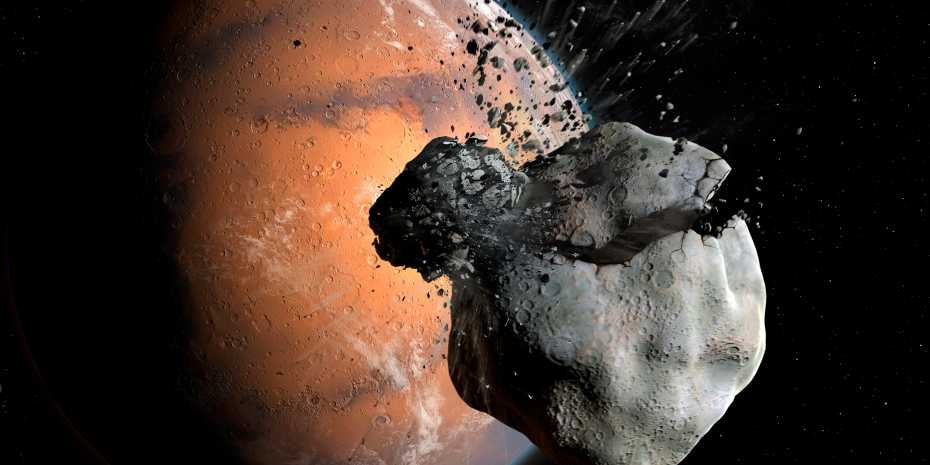
Still, these names haven’t stopped astronomers from trying to understand the two moons. After all, they are very different from our own Moon. They’re not perfect little spheres; they’re more potato-shaped blobs. They’re tiny and among the smallest moons in our solar system. They orbit really close to Mars: Phobos goes around Mars three times a day, and Deimos takes a whopping 30 hours to orbit.
Phobos is spiralling inward toward Mars and is expected to crash or break up before it reaches the surface in about 50 million years. It might even form a ring. Both moons are tidally locked. If you stood on Phobos, Mars would fill the sky. There is talk, though, of using it for a Martian base, a place where astronauts could remain shielded from cosmic rays while observing the Red Planet and sending more robots to the surface.
But how did Mars wind up with these two misshapen lumps as moons? They could be captured asteroids that got trapped in Mars’ gravity field, except that captured objects tend to have highly eccentric orbits at random inclinations, and that isn’t the case with Phobos and Deimos. Their orbits are nearly circular and in the equatorial plane of Mars. So… what are they?
A new paper in Nature Astronomy seeks to answer this question. The team responsible used computer simulations to calculate changes in the orbits over time and take a mathematical look at the past. They found that the two moons may have crossed orbits. Co-author Amir Khan explains: This means that the moons were very likely in the same place and therefore have the same origin.
Simply put, lead author Amirhossein Bagheri says: Phobos and Deimos are the remainders of this lost moon.
The team used data from NASA’s InSight Mission to create their simulations. InSight has been collecting data on its seismometer, recording marsquakes and maybe meteorite impacts, which allows scientists to understand how energy is being dissipated within Mars. Add in tidal effects from Phobos (and even Deimos), and they can get a good picture of the interactions between the Red Planet and its moons.
Other probes have been used to find the density of the moons, which is incredibly low compared to Earth — around 2 g/cm3 compared to 5.5 g/cm3 — and means Phobos and Deimos are very porous. All of these numbers and interactions allowed the scientists to refine their theory on the tidal effects, and that gave them the data needed to create and run their simulations, looking backward in time to track the orbits of the moons. And somewhere between 1 and 2.7 billion years ago, Phobos and Deimos were born, likely from one body.
I mentioned that Phobos is moving closer and closer to Mars every year. Deimos, it turns out, is probably still in the original orbit of that larger body. We’ll have to wait for JAXA’s Martian Moons eXploration mission to launch and explore the moons to learn more at this point. That mission is slated for a 2024 launch and a sample return in 2029. Another spacecraft to look forward to, and we’ll keep you up to date here on Daily Space.
What’s Up
I fully realize that for many of you, going outside means experiencing the wonderfully nasty mud that signifies melted snow and spring rains. The skies for most of us aren’t really that great, and the nights are still cold, but if you have a telescope, there is something going on that you probably want to check out.

The brightest star in the sky, Sirius, is currently hanging bright in the southern sky in the early evening. Called the Dog Star, Sirius marks the chest of Canis Major, one of Orion’s two dogs.
As so often happens in astronomy, with the development of the telescope, it was discovered that Sirius isn’t just one star: it is two, and these stars are orbiting each other with a roughly fifty-year period. One of these stars is a standard blue giant with a mass about twice that of the Sun. The other star, first seen in 1862, was the first white dwarf star to ever be observed. The also bright, also bluish object is the core of a now-dead star. That core is about one solar mass and is roughly the volume of the Moon.
When first spotted by Alvin Clark, our ability to make telescopes and cameras was far from what it is today, and right now, as those stars just happen to hang out at roughly their greatest separation, you may be able to see them as separate in your own telescope using a CCD camera. The stars are roughly ten arcseconds apart. You’ll want to take a bunch of short exposures and combine them so the light of the larger Sirius A doesn’t drown out the white dwarf Sirius B.

Right now, Sirius is in a good place to start observing after sunset and will be up throughout the night for many observers in equatorial and mid-latitudes. Each night, it will rise a bit later, until, in August, this Dog Star is rising just before the Sun. This star is actually why August is referred to as the ‘dog days of summer’. In ancient times, it was thought the added light of Sirius during the summer was part of what made August so darn hot. Nope. That turns out to be thermal lag, which is a different story for another day.
This has been the Daily Space.
Learn More
New Type of Dark Energy Proposed Could Solve Conflicting Calculations
- University of Southern Denmark press release
- “New early dark energy,” Florian Niedermann and Martin S. Sloth, 2021 February 19, Physical Review D
New Data Confirms 2004 Theory About Sun’s Compositional Variance
- U.S. Naval Research Laboratory press release
- “The FIP and Inverse FIP Effects in Solar Flares,” J. Martin Laming, to be published in The Astrophysical Journal (preprint on arxiv.org)
Source of High-Energy Particles in Sun Located
- University College London press release
- “The source of the major solar energetic particle events from super active region 11944,” David H. Brooks and Stephanie L. Yardley, 2021 March 3, Science Advances
Three Planets Found Close to Red Supergiant Stars
- Nicolaus Copernicus University press release
- “Tracking Advanced Planetary Systems (TAPAS) with HARPS-N VII. Elder suns with low-mass companions,” Andrzej T. Niedzielski et al., to be published in Astronomy & Astrophysics (preprint on arxiv.org)
Understanding Ash Sedimentation to Predict Volcanic Outcomes
- University of Geneva press release
- “The fate of volcanic ash: premature or delayed sedimentation?“, Eduardo Rossi et al., 2021 February 26, Nature Communications
Increased Seismic Activity on Icelandic Peninsula Near Keilir
- Icelandic Met Office press release
Mars’ Moons Once Part of Larger Body Orbiting Mars
- ETH-Zürich press release
- Mars Moons (NASA)
- “Dynamical evidence for Phobos and Deimos as remnants of a disrupted common progenitor,” Amirhossein Bagheri et al., 2021 February 22, Nature Astronomy
What’s Up: Sirius and Canis Major
- See Sirius, the brightest star in the night sky (Earthsky.org)
Credits
Written by Pamela Gay and Beth Johnson
Hosted by Pamela Gay and Beth Johnson
Audio and Video Editing by Ally Pelphrey
Content Editing by Beth Johnson
Intro and Outro music by Kevin MacLeod, https://incompetech.com/music/


 We record most shows live, on Twitch. Follow us today to get alerts when we go live.
We record most shows live, on Twitch. Follow us today to get alerts when we go live.